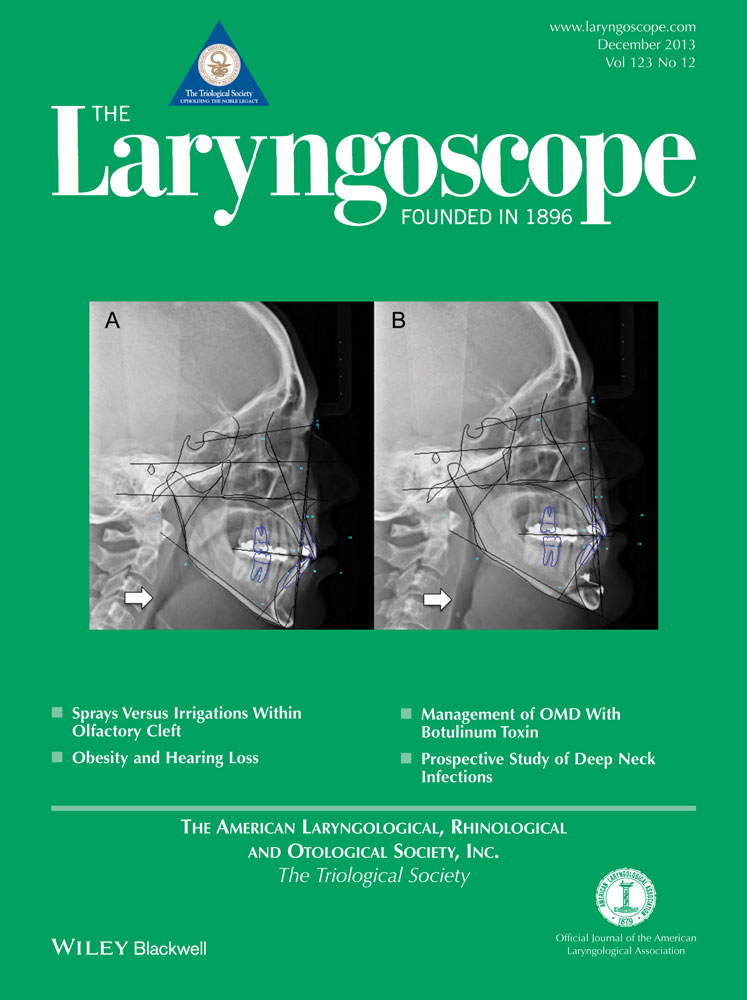The effect of geniglossal advancement on airway flow using a computational flow dynamics model
Presented as a podium presentation at the Triological Society Meeting, Scottsdale, Arizona, U.S.A., January 25, 2013.
This work was supported by the NIH (DE021413-01A1) and the University of Iowa CTSA (KL2RR024980). The authors have no other funding, financial relationships, or conflicts of interest to disclose.
Abstract
Objectives/Hypothesis
Obstructive sleep apnea (OSA) is a sleep disorder caused by partial or complete collapse of the pharyngeal airway. Genioglossal advancement (GGA) is a well-tolerated surgical procedure intended to address hypopharyngeal collapse, yet there are few studies that monitor changes in airflow dynamics at this site. Computation fluid dynamics (CFD) utilizes airflow simulation to predict changes in airflow after anatomic manipulation.
Study Design
We investigated the change in volume and airflow dynamics of the pharyngeal airway after GGA in a cadaveric model.
Methods
We performed serial GGA from 1 mm (control) to 3, 7, and 9 mm on a lightly preserved cadaver. After each intervention, we performed high-resolution computed tomography scans, reconstructed the pharyngeal airway, and quantified airspace volume and CFD analysis with both laminar and large eddy simulation models.
Results
Airway volume increased with linear GGA. In both CFD simulation models, velocity increased and pressure decreased after 9-mm advancement secondary to increased airway diameter and less abrupt changes in airway geometry.
Conclusions
These results suggest that GGA may be effective in increasing airway volume and flow to address hypopharyngeal obstruction in OSA.
Level of Evidence
N/A. Laryngoscope, 123:3227–3232, 2013




